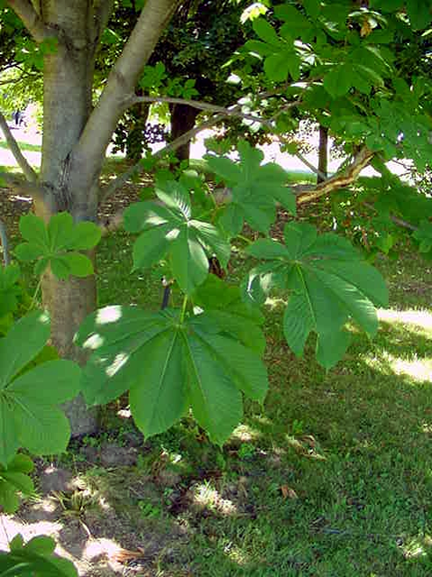| General Description | A large coarse textured tree, similar in initial observation to A. hippocastanum. |
| ID Characteristic | Broad almost pear shaped fruit about 5 cm wide with a rough surface and few spines. |
| Shape | Large rounded crown. |
| Landscape | Limited use in the landscape but suitable in large open areas where its form and white flowers can be seen from a distance. |
| Propagation | The seed germinates almost immediately and must be given protection so it is best to sow it immediately upon collection in a cold frame. The seed is recalcitrant and has a very limited viability and must not be allowed to dry out. It cannot be stored long term (greater than three months). |
| Cultivation | Readily cultivated in average garden or landscape conditions. Suitable also for heavy soils but that have positive drainage. |
| Pests | Prone to horse chestnut leaf miner ( Cameraria ohridella). |
| Notable Specimens | Weldon Library, University of Western Ontario, Ontario, Canada. |
| Flower/Leaf Bud Description | Large pointed resinous buds. |
| Leaf Description | Large leaves, usually five leaflets per leaf but can be more, sessile and obovate. |
| Flower Description | Large white panicles to about 30 cm in height.The flowers are hermaphrodite. |
| Fruit Description | Broad almost pear shaped fruit about 5 cm wide with a rough surface and few spines. |
| Colour Description | Autumn colour of little value. |
| Texture Description | Very coarse textured tree. |
